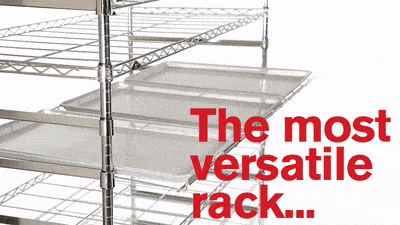The curing process is one of the most critical stages in a cannabis production process. The plants need to be handled with great care to ensure the buds are appropriately dried to produce the perfect end-product. While there are many drying solutions available, the two most common are hang drying and tray drying. In this article, we'll discuss the differences and highlight the various benefits associated with both methodologies.
Professionalism
While hobbyist growers may find hang drying is a more straightforward solution and more cost-effective for a limited budget, professional horticulturists and sophisticated grow operations should leverage a tray drying method. The hang drying method leaves your plant exposed to open air which means, you must regularly monitor the room's temperature and airflow which can be a difficult task. Also, as your operation grows, you will need to consider leveraging industrial drying solutions to keep up with the amount of product you are producing, such as those made possible by tray/rack dryers.
Tray Dying Advancements
As more professional groups take on the growing cannabis industry. Advancements have been made to create a more standardized and efficient tray drying processes. New cannabis trays are created with medical - grade plastics. Each Metro cannabis tray is also designed for hands free flower rotation for more sanitary processing. Each WavDri tray also includes Microban antimicrobial technology built into the plastic to help keep your products cleaner between regular cleanings.
Aroma
When hang drying in an open room, the buds tend to produce a much stronger aroma than if you were to dry on a tray. For operations nested close to other businesses or residents, avoiding an over-bearing aroma can be very important. For this reason, tray drying may be more beneficial as the scent can be contained better with a tray drying system.
Speed
For many growers, a fast drying solution may hold a stronger appeal, as it leads to increased production volume. With a hang drying setup, you can hang full hemp branches with many buds, whereas with tray drying you would typically lay individual buds onto the rack after trimming away excess plant matter. This makes tray drying a more efficient option because you are forced to manicure the buds before drying, which means, the drying process will move faster. Hang drying tends to max out at about 7-10 days when the stems begin to snap, while tray drying can be a much shorter process depending on the density of product, ventilation, and equipment.

Volume
Tray setups tend to be better when you're handling a large quantity of product -- especially if you've already done some initial pruning. If you're looking for a consistent product, tray drying can ensure each tray has the same temperature. Many operations with high-volume start with hang drying before discovering the benefits of tray trying. Hang drying can be more comfortable at first when handling lots of product; however, tray drying is more efficient for storing the actual buds that will become the final product. As your product quantity increases, trays end up saving you valuable space.
Space
Sometimes the decision comes down to how much space you have available. If your operation has limited space for drying buds, a tray drying solution can be more efficient. The reason is that you can stack multiple rows of drying buds on top of one another while still producing well-cured buds as the end-product. While some operations use both hang drying and tray drying, this can be inefficient if you're working with limited space.
Combination
Rather than implementing only one drying solution, some grow operations have found great success by combining multiple solutions. For example, you may consider hang drying for five days before trimming away leaves and moving into a rack/tray drying equipment. This allows you to reap the benefits of both solutions while monitoring the impact of each step (you may even consider reversing the process). A combination of tray drying and hang drying allows you to develop a custom drying method that best suits your product, facility and production process.

